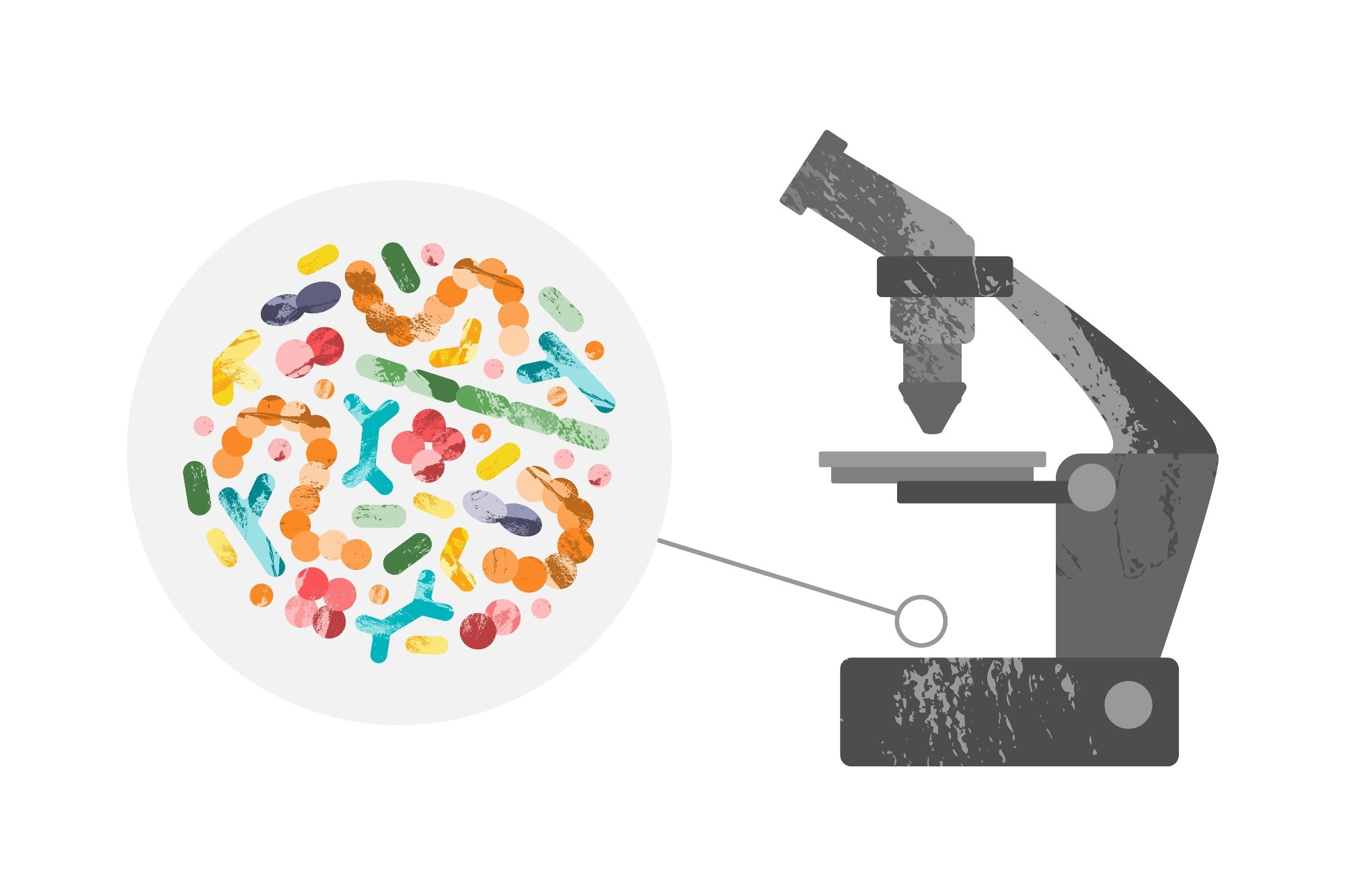Do Contraceptives affect the Vaginal Microbiome?

Introduction
Mechanical contraception
Copper intrauterine device (Cu-T IUD)
Hormonal Contraception
Conclusions
References
Further reading
The human host harbors trillions of microbes on the external and internal body surfaces. Most of these microbes enjoy symbiotic relationships with the human body, though a few are potentially pathogenic.
In females, the vagina harbors its own distinctive community. The gene pool formed by all the communities that form the microbiota of a given host or organ system is called the microbiome.
The vaginal microbiome (VMB) is dominated by Lactobacillus species that produce lactic acid. This contributes to the acid pH of the vagina, which is itself a protective mechanism against colonization by potentially pathogenic bacteria and other invasive microbes.
 Image Credit: Net Vector/Shutterstock
Image Credit: Net Vector/Shutterstock
Disruptions of the VMB are common and may lead to vaginal dysbiosis (VD) if they persist. The latter condition includes bacterial vaginosis (BV), vulvovaginal candidiasis (VVC) and aerobic vaginitis. These are associated with a higher risk of sexual transmitted infections (STIs), preterm labor and low birth weight (LBW) babies.
Risk factors for VD include douching, multiple sex partners, hormonal changes as occur during puberty, the menstrual cycle, and menopause, and conditions like polycystic ovarian syndrome (PCOS). Contraceptive use is also linked to VD.
In the USA, it is estimated that two-thirds of women in the reproductive age group are on contraception at any given point. During the sexually active years, nearly all women in the US use contraception at some time during their sexually active years.
Contraceptives in common use include hormonal medications – medroxyprogestone acetate (MPA) in depot injectable form (DMPA); norethinyl enanthate, and combinations of estrogen and progesterone. Intrauterine contraceptive devices releasing copper or progesterone, like levonorgestrel, are preferred by many women. Other common contraceptives are barrier contraceptives like condoms.
Mechanical contraception
Mechanical or barrier contraception methods include male and female condoms, cervical caps, diaphragms, and spermicides.
The use of douches in the vagina is a potential mechanical cause of VD, because of the reduction in LB that is associated with lower production of hydrogen peroxide. The resulting increase in vaginal pH is linked to a greater risk of BV.
Spermicides are chemicals meant to kill sperm or prevent their entry into the cervix. They are typically sold as creams or gels, or foams, or suppositories. However, nonoxynol-9, the most used spermicide, causes LB counts in the VMB to fall. This could be due to the accompanying irritation of the vaginal epithelium and microbial cell membranes because of its detergent-like action.
Moreover, nonoxynol-9 may cause allergic vaginitis. Overall, this spermicide appears to increase the risk of vaginal infection and of STIs. These dangers have also been reported with other spermicides like cellulose sulfate, or Phexxi, a combination of lactic acid, citric acid, and potassium bitartrate available as a prescription drug.
Predictably, these are associated with a higher risk of vaginal irritation and inflammation, vaginal discharge and yeast infection, and BV, among others.
All barrier contraceptives like condoms and cervical caps are also associated with a higher risk of VD. Condom use is linked to alterations in the metabolism of the VMB, reflecting an inflammatory response. Allergic and irritant vaginitis is often reported as well.
These effects could be due to either the latex or the spermicide that is often used to coat the condom, along with the mechanical disruption caused by the condom. Diaphragms and cervical caps can also cause mechano-chemical disruption of the VMB.

 Read Next: Vaginal Microbiome and Gynecological Cancer
Read Next: Vaginal Microbiome and Gynecological Cancer
Copper intrauterine device (Cu-T IUD)
The Cu-T IUD can be used for up to ten years as a form of contraception. Some studies show a positive association with VD. This could be due to the effect of the IUD on the menstrual cycle, which often shows alterations in the users. The increased volume and duration of bleeding may make more iron available to organisms like Gardnerella vaginalis, promoting their growth and initiating VD.
 Image Credit: Juliasuena/Shutterstock
Image Credit: Juliasuena/Shutterstock
Hormonal contraception
Omics eBook

Hormonal abnormalities can cause aberrations in the VMB, such as in PCOS. In this condition, the high levels of testosterone and changes in estrogen and progesterone are linked to an increase in the abundance of pathogens like Prevotella and Mycoplasma, but a lower abundance of L. crispatus.
Low estrogen levels cause reduced glycogen content in the vaginal epithelium, reducing the substrate for LB metabolism that produces lactic acid. Interestingly, however, the use of the levonorgestrel IUD (LNG-IUD), the DMPA shot, and combined oral contraceptives (“the pill”, COCs), have been reported by some authors to be associated with a stable VMB and low BV levels.
The use of norethisterone enanthate (NET-EN) injectable contraception is also associated with a reduced inflammatory response, perhaps because of the high level of L. crispatus that could counteract the inflammatory bacteria also increased with its use.
COCs may increase the level of non-H2O2-producing L. iners rather than other LB types, though this remains to be established. The associated reduction in vaginal inflammation may counteract this effect to reduce the risk of BV. Other authors report a two-fold higher chance of colonization by beneficial H2O2 producers with COC or DMPA use, but not with LNG-IUDs.
The estrogen-containing ring also seems to promote LB abundance, with reduced Gardnerella vaginalis concentrations. However, the ring containing both estrogen and progesterone was associated with a higher risk of vaginal and cervical inflammation in one study, which could enhance the risk of VD and other infections. Indeed, a higher incidence of yeast infections was reported with this type of ring.
Other studies contradict these findings. COCs may also increase the risk of yeast infections in the vagina.
 Image Credit: Natty_Blissful/Shutterstock
Image Credit: Natty_Blissful/Shutterstock
Conclusions
Contraception decisions should be made based on accurate data about the risks and benefits, as well as cost and convenience factors. Patients who have repeated infections and allergic vaginitis might be better advised to avoid mechanical contraception. Further research will be required to explore these areas to help make informed decisions.
References
- Bakus, C. et al. (2023). The impact of contraceptives on the vaginal microbiome in the non-pregnant state. Frontiers in Microbiomes. https://doi.org/10.3389/frmbi.2022.1055472. https://www.frontiersin.org/articles/10.3389/frmbi.2022.1055472/full
- Bastianelli, C. et al. (2021). The effect of different contraceptive methods on the vaginal microbiome. Expert Review of Clinical Pharmacology. DOI: 10.1080/17512433.2021.1917373. https://pubmed.ncbi.nlm.nih.gov/33863265/.
- Balle, C. et al. (2020). Hormonal contraception alters vaginal microbiota and cytokines in South African adolescents in a randomized trial. Nature Communications. DOI: https://doi.org/10.1038/s41467-020-19382-9. https://www.nature.com/articles/s41467-020-19382-9.
- Noel-Romas, L. et al. (2020). Vaginal microbiome-hormonal contraceptive interactions associate with the mucosal proteome and HIV acquisition. PLOS Pathogens. https://doi.org/10.1371/journal.ppat.1009097. https://journals.plos.org/plospathogens/article?id=10.1371/journal.ppat.1009097.
- Brooks, J. P. et al. (2016). Effects of combined oral contraceptives, depot medroxyprogesterone acetate and the levonorgestrel-releasing intrauterine system on the vaginal microbiome. Contraception. doi: https://doi.org/10.1016/j.contraception.2016.11.006. https://www.contraceptionjournal.org/article/S0010-7824(16)30510-8/fulltext.
Further Reading
- All Microbiome Content
- What is the Human Virome?
- How Does the Diet Impact Microbiota?
- The Microbiome of a Newborn
- Fecal Microbiota Transplant
Last Updated: Mar 16, 2023

Written by
Dr. Liji Thomas
Dr. Liji Thomas is an OB-GYN, who graduated from the Government Medical College, University of Calicut, Kerala, in 2001. Liji practiced as a full-time consultant in obstetrics/gynecology in a private hospital for a few years following her graduation. She has counseled hundreds of patients facing issues from pregnancy-related problems and infertility, and has been in charge of over 2,000 deliveries, striving always to achieve a normal delivery rather than operative.
Source: Read Full Article